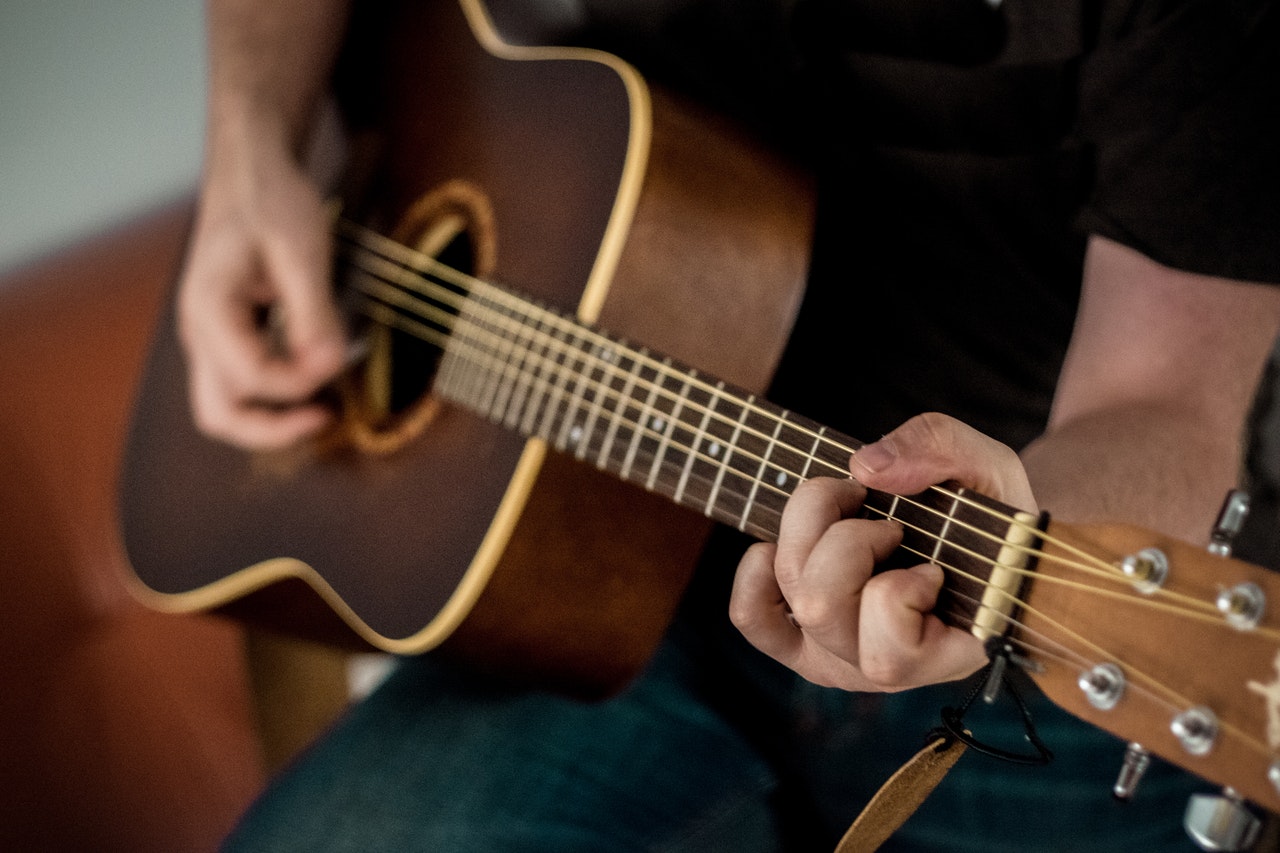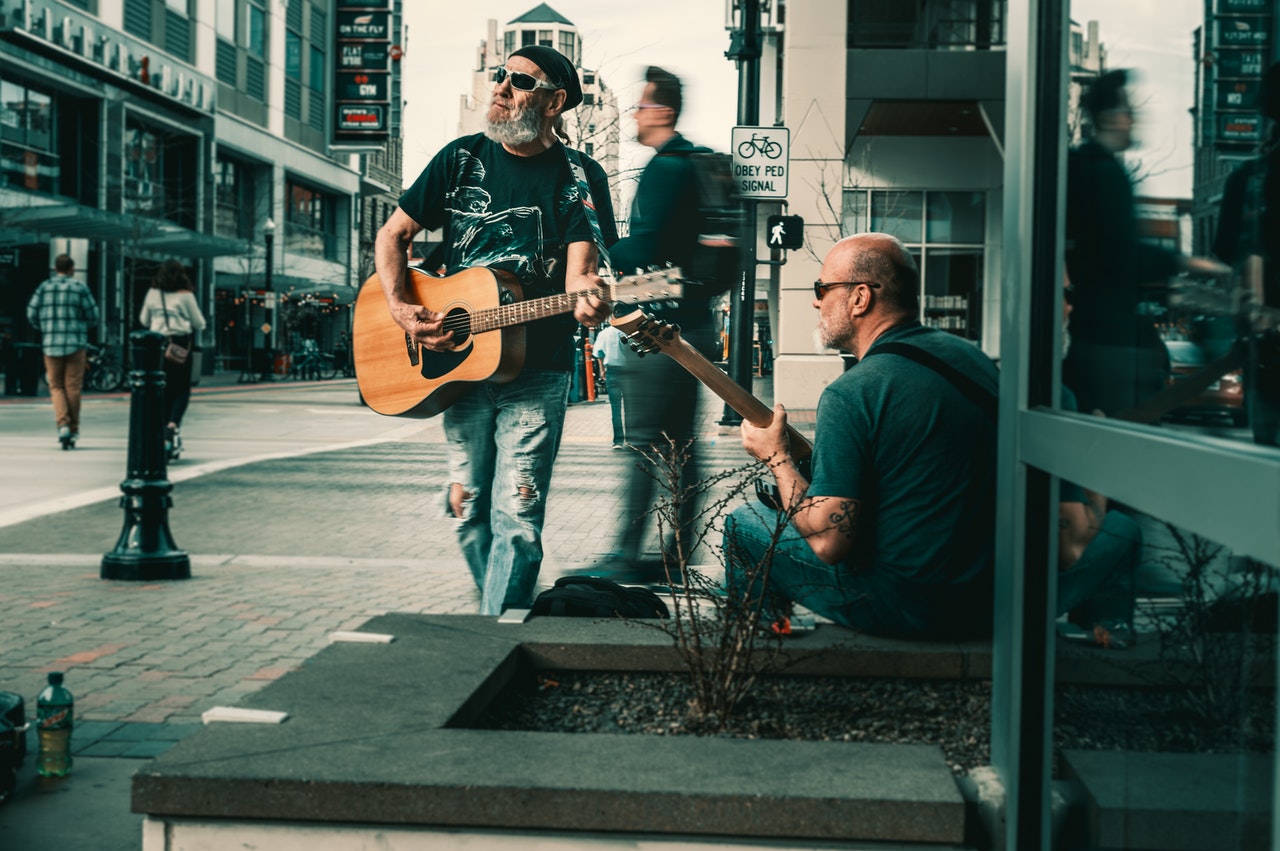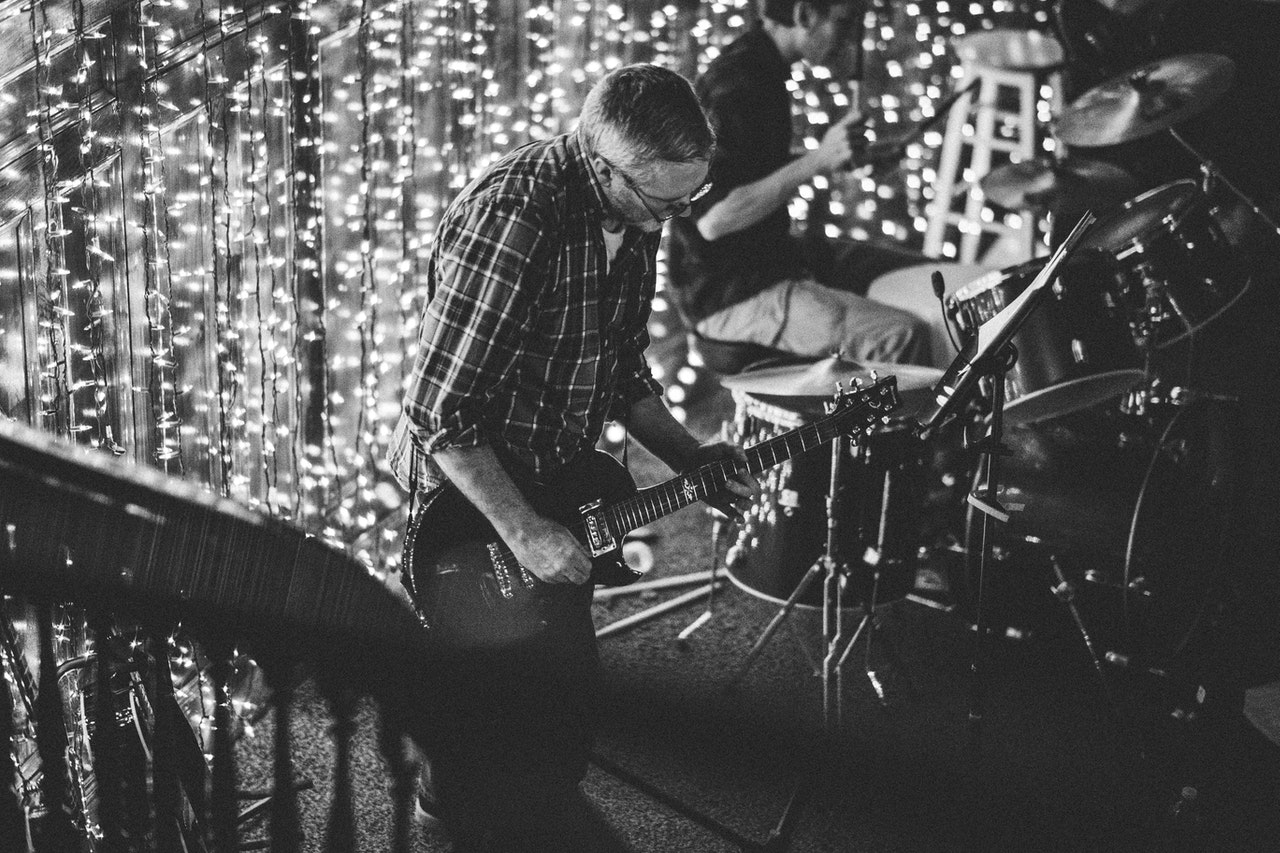A Reunion
Share
Neil: So, I’m here with Mike Mullins we haven’t seen each other in many years probably 10 or 15 at least
for more than here and there and a (Strumming the guitar), we just gonna sort go over…for more when
I was 12 or 13 years old we’re just gonna reminisce and I just grab his guitar coz it’s really cool, tell me
about this thing man.
Mike: This guitar is a Martin D18 it’s a 1943 and it’s a undergoing a few changes but I had this guitar it’s
been my primary guitar since 1976 back then it was affordable. Now this guitar is kind of skyrocketed
and become very collectable at that time it was just kind of bitter guitar that was lying around the music
store and the Gryphon Stringed Instrument and it’s fantastic sounding guitar. But I’ve played it I had
other instrument over the years but this is the one I kept the longest I mean 34 years starting next years
so its probably never part of it.
Neil: I know!
Mike: Its not that I could probably afford another one
Neil: Yeah
Mike: You know it’s been a lot of the recording I’ve done and something I put it away and play another
guitars but I always end up you know going back to this one its just kind of my stand by.
Neil: Yeah.
Mike: And a…
Neil: The tone its just amazing…
(Strumming the guitar)
Mike: Yeah pretty happy with this guy…
Neil: Yeah, you know I mean they can’t really build guitars get the new guitar that was sound like this
coz I was 60 years old.
Mike: Well the way guitars are built now, the wood is not dried out at his age and generally they used
hide glue and some of the upper end Martin’s now their using hide glue trying to construct then fatefully
like they did in the 1930s and…
Neil: So, what was the advantage to that to hide glue?
Mike: I’m not…
Neil: Or something they were using back then…
Mike: That’s what we’re using back then and the later glue is apparently from what I’ve heard puris coz
its sort of integrates with the wood a little bit…it’s vibrate a little more freely. It’s just you know anything
that is just a more natural substance rather than a synthetic.
Neil: Yeah, so at some point they’ve changed from that into what was the next..any idea?
Mike: The glues they used now their just more modern chemical composition…
Neil: Oh Okay.
Mike: I’m not sure of the nature of it, I don’t believe that Martin’s used hide glue from the last 30 or 40
years at least but they’re. But this guitars have what they called scalp bracing on the top, they used that
again but Martin abandoned it in 1940s but the ones this guitars have the braces, how do I describe this,
they come to picks when they were in the inside or top, I can’t show,,,
Mneil: Yeah
Mike: Instead of being all one pickies…
Neil: Bar,,Yeah
Mike: They at the stressed ones they kind of form a little P and their thinner well theres much more
free vibration. This guitar is very more constructive surprisingly there’s almost no bulge at the top well
there’s a constant almost 200 lbs tension. I used medium gauge strings,,,this are much light…
Neil: More like the guitar…
Mike: Yes it does I tried lights on this and for what I do they just don’t, they don’t really I have to
compete with the Mandolin, sometimes a Bajo a loud fiddle and even when your amplified using light
strings and they just buzz more…
Neil: Yeah.
Mike: You don’t get, you don’t pluck it… (Strumming the guitar)
Neil: Co’z it’s like set up properly for mediums like this, you know you notice its hardr to play.
Mike: Yeah, fairly easy to play you used the lights , extra lights to kind of go out, you know you can’t
bend it…
Neil: Yeah…
Miike: But I don’t really bend strings that much. My experience of bending strings have always I don’t
know how players bend strings and their guitars on easy tune, this guitars isn’t really like get well it off…
Neil: yeah
Mike: What are you doing?…I’m old
(Strumming the guitar)
Neil: I was trying I think I was playing with my son quite the other night and he might been playing
something like Wish You Were Here quite on Floyd tune, well David Young more plays of course a plain
3rd and can bend that note…a whole step no problem…
Mike: Alright!
Neil: You know.
Mike: Yeah.
Neil: And so, but with my mediums you know 17, what is it on their, its like a 26 something on the 3rd
string is that what you do for medium?
Mike: Yeah it’s a 26…
Neil: Yeah It’s a 26, you know bending that at the 4th step at the 4th fret you know…
Mike: (laughing)
Neil: The guitar the string you know it probably be break or something.
Mike: Yeah.
Neil: Just doesn’t happen.
Mike: But yeah I also have the guitar called the Collings made in Austin Texas
Neil: Yeah…
Mike: And that’s a great sounding guitar and its basically kind of a replica of this. This is a D18, D18s are
they generally I a lot of times people think that they’re a smaller guitar than the D28 which is sort of the
most famous Martin dreadnought people have this impression, they are a little smaller their the same
size.
Neil: Yeah
Mike: They’re exactly the same size just the difference is this guitar has a mahogany back and sides and
it’s a plainer as far as its ornamentation the D28s are white binding and herringbone strip around the
top.
Neil: Yeah.
Mike: And Rosewood back and sides Rosewood has a little deeper darker tone maybe a little more
complex sound. But the 18s have the very immediate you know punchy balance with a lot of kind of
higher over tones and a lot of players prefer them I personally happen to have a D18 I love D28 also I
had a couple of very nice ones I don’t currently have one right now, but my son has one his got it.
Neil: Oh he got ears?
Mike: Well no! he actually have…of D28
Neil: Oh really!
Mike: Long story but yeah…
Neil: We got to go with that Ted stand…
Mike: (laughing)
Neil: Its gonna be part of the next…
Mike: But basically, there’s a I think the mahogany guitars especially from this era Teron, Palm,
Rosewood they’re just a little bit different sound.
Neil: Yeah.
Mike: You know, there are players who prefer you know to me its just what sound is good, you know if it
sounds good to you it doesn’t really matter what its made of…
Neil: Yeah.
Mike: Its just a you know people who are into browny points tend to sing a lot of D28 because they’re
rare they’re more valuable…
Neil: They’re more expensive…
Mike: Typically more expensive but it was…
Neil: Lemons and oranges.
Mike: It is. And some people a player can tell the difference you know, if you listen to a recording it
could be a really nice sounding D18 on their, you don’t know for sure there’s an interesting record put
out by my friend David Grisman called Tone Poems.
Neil: Oh yeah
Mike: He and Tony Rice is one of the premier flapickers
Neil: Yeah
Mike: If not, I mean they both have excellent tone instruments. They’re extremely high level of
the musicianship fantastic and all and then they produced incredibly great tone they’ve just have a
technique they used, they can take instruments rather rare relatively inexpensive instruments make
it sound fantastic like tone poems thet played 17 different songs this came out about 15 years ago I
recommend, if your into all vintage instruments and north american freted instruments guitars and
Mandolins they each play 17 different intruments Tony plays 17 different guitars and David plays 17
different Mandolins. And well some of the guitars are very, you know high end like they at one point
they will play his Gibson Lloyd Lure F5 1923 and Tony will play a 1939 Martin D45 which they were on
91 D45s made and you won’t find one for sale they’re generally around $200,000 these days and they’ll
play something like that. And then at some tune they might play something relatively inexpensive you
know almost like, not a serious road but…
Neil: Montgomery mode or something…
Mike: Pretty much, they have a couple I don’t know David plays his Mandolin I think its called rosette
stuart snow queen…its kind of monstrousity, its all like a mother of toilet seat you know the head
stuck its very Goddie. Its non expensive instrument its design to look flashy, yeah, and then Tony plays
inexpensive guitar I forget who made it but its got like the Rosette has like dice you know and its balck
the whole is just jet black.
Neil: Aha
Mike:Its probably from the 30s or 40s yet somehow with there technique they make this cheap
instrument you know it was really realy good…
Neil: Yeah
Mike: And its you know. So its an interesting project I’m kind of rambling about it. Its just to show where
its kind of sometimes if your position to get something like this, you can get you know it’s kind of like
it’s the driver more than the car.
Neil: Yeah
Mike: You know so you can have it relatively you know inexpensive instruments if you have good
technique technique and a good foundation it make it sound oretty good.
Neil: Yeah you know one thing that’s really important too that both those guys have is the level of
musicianship and sense of rhythm to where they’re never gonna play a note like at the wrong time…
Mike: (Laughing)
Neil: Which you hear that things; Oh that’s doesn’t sound really good coz they keep missing notes.
Mike: Yeah yeah
Neil: So, because its so crispy in time and tune and everything its gonna sound great even if the quality
of the instrument is a little…
Mike: Well yeah yeah…
Neil: But you hear a student having a way doodooo… you know and well that’s a lousy instrument that’s
a lousy driver…
Mike: Yeah somnebodys playing an old guitar with a really thin finger thin or something and…
Neil: And all you hear is pick noise and a you know he sing not really that great you know like…









